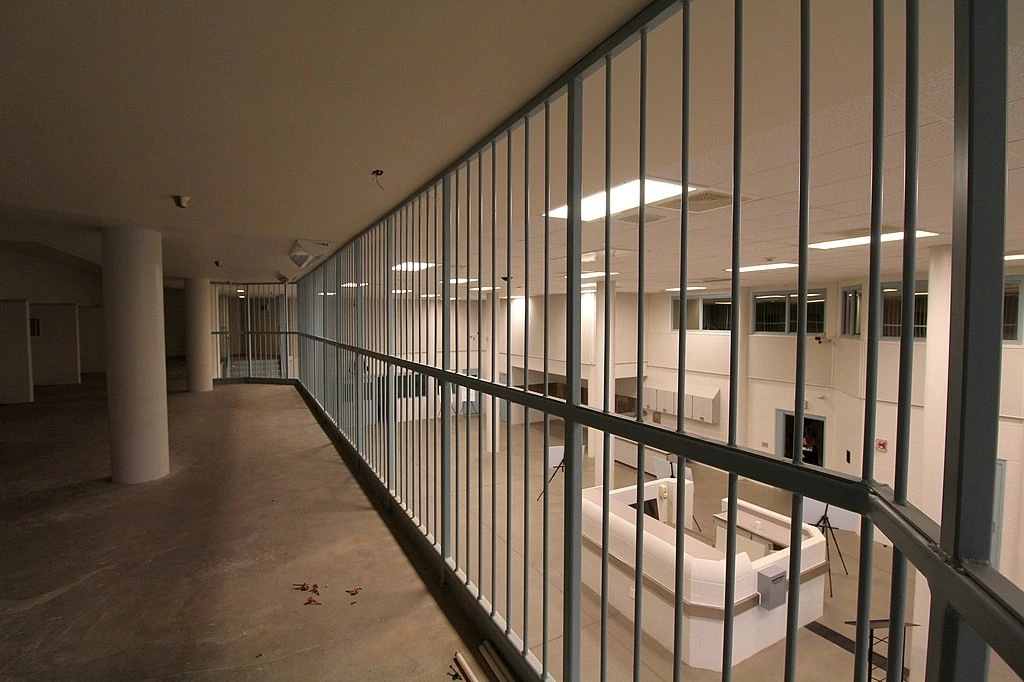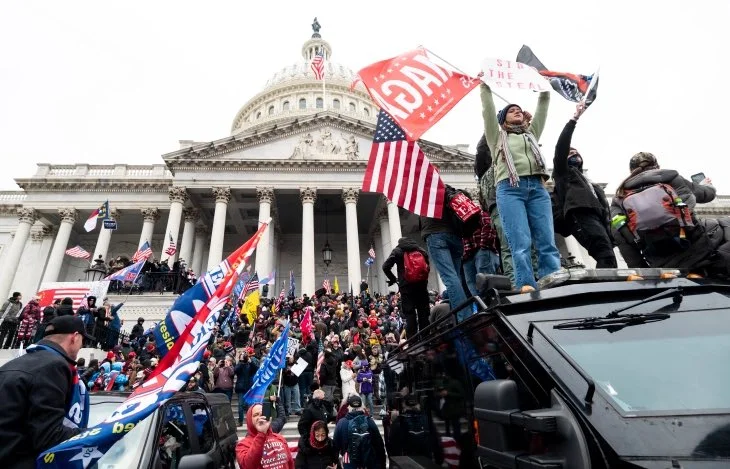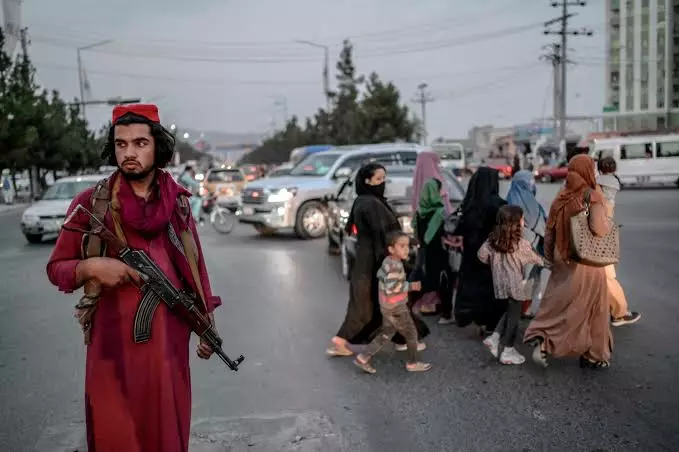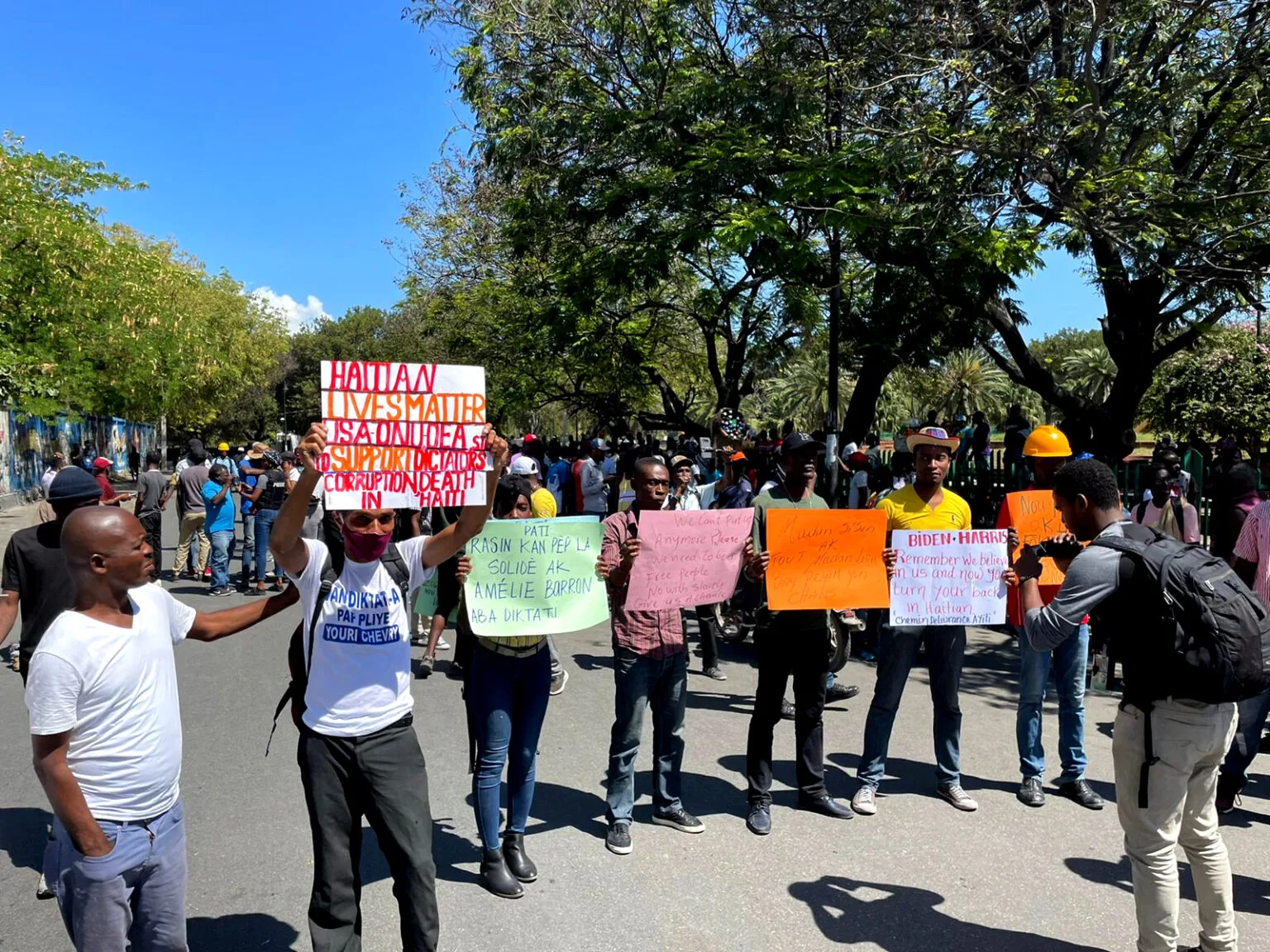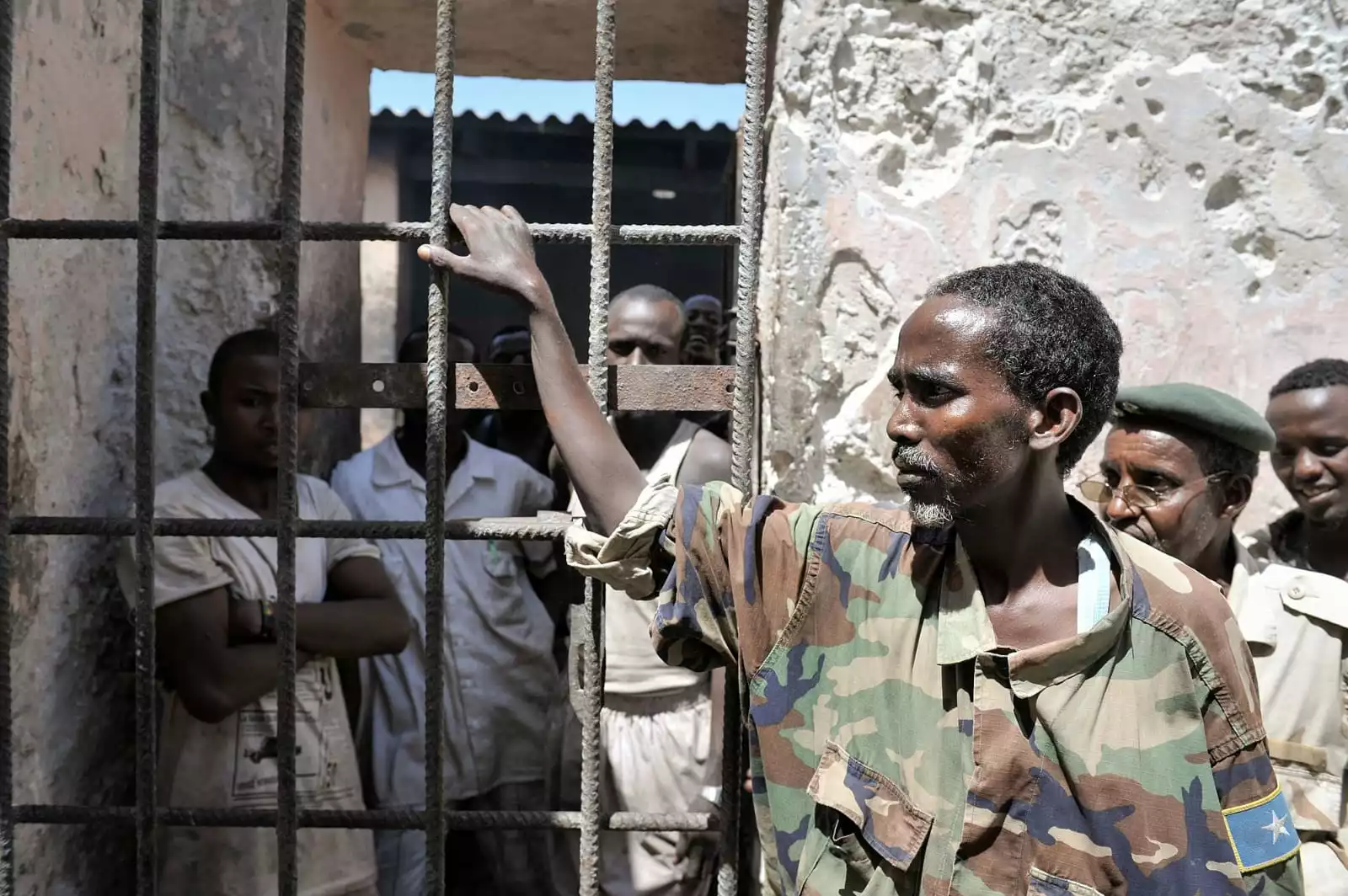Although the United States has branded itself as the bastion of freedom both at home and abroad, it is abundantly clear to any objective observer that, just as U.S. imperialism undermines those claims on a global scale, the fascist police state and “prison industrial complex” that exists in the nation today do the same on a domestic front.
The United States maintains the highest military budget in the world to defend its worldwide hegemony. For the fiscal year 2022, the six US Department of Defense (DOD) subcomponents each received $1.64 trillion. This is quite well known, but the fact that the United States police forces, should they be regarded as a national military, would rank third on the planet in terms of budget, only behind China and the U.S. military itself, may shock some.
With national spending of around $126 billion on police, many police departments in the United States have budgets for a single city that rival those of entire nations' military forces. For instance, the New York Police Department (NYPD)“serves” the 8.4 million residents of New York City, with a budget of about $5.5 billion. Vietnam, a country of 98.17 million, spends roughly the same amount on its military to protect itself from the imperialist aspirations of its neighbors and the West. According to the rhetoric coming from the West, North Korea is an authoritarian, militarized, and repressive state. North Korea, a country of about 26 million people, has a total military budget of roughly $1.6 billion. The Los Angeles Police Department (LAPD) alone exceeds this with a budget of $1.9 billionfor a city of about 3.85 million people.
Despite making up only 4% of the world's population, the United States houses 20%-25% of all prisoners worldwide. Comparatively, China, another country that Westerners commonly perceive as being particularly authoritarian, is home to 15% of the world's prisoners and around 18.5% of the world's population. The United States has a comparable number of prisoners to the 194 countries with the lowest incarceration rates. Even during the height of the Second World War, the highest estimates of prisoners in the notorious gulags (rural prison camps) of the former Soviet Union were 2 to 2.5 million people, including prisoners of war (POWs).
Furthermore, we should discuss the vast majority of inmates the system has yet to try when looking at American assertions about due process and the presumption of innocence, which we hold in such high regard. A third of those incarcerated are in jail, and if you include the 111,000 people detained in jails that rent out space to other organizations, 67% are still not convicted (pending trial, final verdict or sentencing) and therefore legally considered innocent until proven guilty. These incarceration rates are primarily affected by State bail laws.
Over the past 25 years, pre-trial imprisonment has increased more quickly than the number of convicted criminals detained in jail, not the other way around. This has been accomplished mainly by targeting the poorest Americans through the bail system. Pre-trial detainees typically earn less than half the income of their non-incarcerated counterparts' typical income in the general population. The median person jailed without bond would need nearly eight months' worth of salary to cover the $10,000 average bail amount for felonies. Despite having a startling daily population of 547,000, the approximately 10 million individuals who enter jails and prisons annually dwarf this figure.
To address economic, social, and political issues in the best interests of the capitalist class, the U.S. relies on a state that is highly reliant on monitoring, police, and imprisonment. In essence, the corporate media depicts oppressed people as career criminals who must be stopped. The police, courts, prisons, and bail system are all part of a complex web collectively which has become known as the Prison Industrial Complex (PIC). These are just a few ways the system unfairly targets people and maintains control over particular populations to ensure the powerful maintain their position.
Some of the most contentious issues regarding the American criminal justice system today include the private prison system, the over-criminalization of drug use, and the use of low-paying or unpaid prison labor. Similarly, essential rational discussions about the social, economic, and moral costs of incarceration and lifelong punishment are frequently derailed by emotional responses to sexual and violent offences. Even though victims as a rule do not favor lengthy sentences, there is nevertheless an effort to defend “lock them up and throw away the key” sentencing by relying on erroneous assumptions about what a conviction for a "violent crime" means for a person's threat to society.
According to a surveyof individuals who reported crime victimization, Alliance for Safety and Justice (2016), Crime Survivors Speak The First-Ever National Survey of Victims' Views on Safety and Justice:
In the public discourse about crime, "violent" and "non-violent" are frequently substituted for "serious" vs "non-serious" illegal behaviors. Even worse, people frequently use these terms to categorize individuals as essentially and innately dangerous or not dangerous (often along racialized lines), which is a fallacyin and of itself.
Contrary to popular belief, there is no clear dividing line between "violent" and "non-violent" crime; the frequent misapplicationof these categories is so typical that these terms have been made useless in any serious policy setting. In truth, state and federal laws include many crimes that do not require bodily harm in their definition of "violent" behavior. Despite burglary typically being classified as a property crime, several state and federal laws arbitrarily define burglary as a violent crime when certain conditions are met, such as when it happens at night, in a home, or when a weapon is present. Therefore, a burglary conviction may well result in a lengthy prison term and a "violent" criminal record, even if the building is vacant. Meth production, drug theft, and handbag snatching are also considered violent offences in several states.
The widespread misunderstanding of what "violent crime" actually entails, a legal distinction that usually has nothing to do with actual or purposeful harm, is one of the significant barriers to effective criminal justice reform. We need to be more precise about the meaning of that vague term. Due to reactionary “knee-jerk” responses to the idea of violent crime, policymakers frequently expressly exclude persons who have been found guilty of legally "violent" crimes from criminal justice reform efforts. However, these carve-outs negate the benefits of otherwise well-designed legislation because more than 40% of people incarcerated and detained are there for so-called "violent" offences. It will be challenging to bring down incarceration rates to anything close to global averages without changing our approach to violent crime.
Many those convicted of violent crimes have indeed badly hurt others. But how does the criminal justice system evaluate the threat level? Too often, we base these decisions on the type of offence committed rather than the specifics of each case. Those who have served jail sentences for violent offences are the least likely to commit crimes again. People convicted of drug, public order, or property-related crimes were twice as likely to be rearrested for related offenses three years after their release from prison as violent offenders. This demonstrates the falsity of the notion that those who commit violent or sexual crimes can never be rehabilitated and should therefore serve lengthy prison sentences, possibly even for the rest of their lives.
As politicians and the public increasingly agree that prior policies have led to unnecessary incarceration, it is time to consider policy reforms beyond the low-hanging fruit of those convicted of non-violent, non-serious, non-sexual offences. We need to change how we respond to more serious and violent crimes if we are honest about ending mass incarceration and supporting public safety. Recidivism data does not support the long-term detention of violent offenders. Re-arrest rates for those who have committed violent or sexual offenses are among the lowest; for those who have committed rape or sexual assault, they are significantly lowerthan for all other infractions.
Age is one of the significant determinants of violence, which may help to explain why those convicted of violent crimes have lower recidivism rates. We keep people in prison long after their threat of violence has decreased, even though the risk of violence typically peaks in adolescence or early adulthood and then falls with age. As we saw throughout the COVID-19 pandemic, as states granted various individuals early release, most officials drastically limited the number of prisoners who could be released early by categorically rejecting individuals who had been found guilty of “violent” or sexual offenses without considering their age or unique circumstances.
One's material circumstances primarily determine recidivism rates, so property and drug crimes, which many people engage in to improve their material situations, have considerably higher recidivism rates than violent crime, which frequently is unrelated to one's material circumstances. Many countries have dramatically reduced recidivism rates because they base their strategies on empirical evidence rather than on emotional appeals, often made not by victims themselves but by those in positions of authority who want to keep their control over the populace. These nations have taken a giant step forward in the name of prisoners' rights, rights of all people, and public safety. Despite these known facts, mass incarceration in the U.S. is maintained for profit and by design.
Prison and jail communication and commissary activities have given rise to super-exploitative multi-billion dollar private enterprises. By privatizing services like phone calls, medical treatment, and commissaries, prisons and jails reduce their budgets at a tremendous social cost and pass these costs onto incarcerated people and their families. Private corporations frequently win contracts to run prison food and health services, often so subpar that they give rise to considerable legal action—many of these industries having disproportionately high profit margins due to the exploitation of prison labor.
Prisons pay inmates shockingly low wages since they depend on them for meal preparation, laundry, and other tasks. The majority of prison employment pays inmates between 86 cents and $3.45 per day on average, according to a 2017 research. At least five states have prison occupations like these that pay nothing at all, a situation that does not significantly differ from slavery.
Many multinational corporations use U.S. prison labor to increase profits. Inmates in jails around the country made face masks and hand sanitizer to fight COVID-19 at the height of the pandemic. Inmates help build the country's infrastructure, fight fires, and work at numerous construction sites and farms since these jails frequently employ their slave labor force to bid for public and commercial contracts. Despite this, it is unlikely that former inmates could obtain a job after being released. This would increase the possibility that they would re-offend and enter the system again, only contributing to the increased likelihood of recidivism and, thus, the case of a return to the criminal justice system.

It is challenging to estimate the size of the prison labor market because the most recent national census conducted on prisoners was in 2005, before some of today’s inmates were even born. Back in 2005, the system employed about 1.5 million prisoners; since then, state legislators and prisons have regulated prison labor. One can only speculate how much this has worsened the situation.
In order to hide the actual expense of operating prisons from most Americans, prisons can shift the price of incarceration onto prisoners by making them work for little or no compensation and charging them for necessities. Necessities such as medical care and personal hygiene goods are just some examples of costs prisons often charge to these low or no-wage workers. In addition, working in jail is often a requirement with little control or oversight, and incarcerated laborers have few rights or safeguards. If a prisoner refuses to work, they risk harsh disciplinary action.
This is due to a sharp exception in the shining promise of freedom that was the Thirteenth Amendment to the US Constitution, which banned chattel slavery after the end of the US Civil War in the 19th Century. The Thirteenth Amendment has in fact allowed prison labor to replace conventional forms of slavery with a new type of slavery based on crime and punishment since the claimed abolition of slavery in 1865. Section 1 of the Amendment provides: "Neither slavery nor involuntary servitude, except as punishment for crime whereof the party shall have been duly convicted, shall exist within the United States, or any place subject to their jurisdiction." Incarcerated persons, therefore, have no constitutional rights in this arena, often forcing them to work without compensation as punishment for their crimes.
Due to this loophole in the 13th Amendment, prisons can force detainees to work laboriously for enormous corporations and little to no pay. First implemented to combat the economic downturn that southern states experienced after the loss of slave labor, convict leasing was cheaper than slavery since farm owners and companies did not have to worry about the costs of purchasing, feeding, or housing slaves, or maintaining their workers' health. They passed these costs onto taxpayers, to the prison labor force, and to the latter’s families. Today, prison labor continues to make a substantial contribution to our economy and country.
Subsequent to the passing of the 13th Amendment, post-abolition laws known as "Black Codes" emerged to further discriminate against, imprison, and enslave the Black population right after the Amendment passed; these included segregation laws that heavily criminalized previously harmless behaviors like "loitering” or “vagrancy.” This system forced these folks to labor in prison. This made it possible for these practices to continue in the U.S. economy, which was largely dependent on slave labor both before and after the Civil War, especially in the agricultural districts of the South. Angola, a former plantation named after a nation which once supplied many enslaved people, still operates today as the Louisiana State Penitentiary and still profits off the labor of enslaved, largely racialized, peoples.
African Americans represent a disproportionate number of people in prison, often justified by racial profiling, fostered by prejudiced assumptions that racial minorities are more prone to use drugs or commit crimes. Because of this, police stop and search African Americans more frequently, which results in far too many injuries and fatalities, as well as disproportionate rates of arrest and incarceration.
Desilver, Lipka, and Fahmy (2020)found that Black male adults were almost five times more likely to be unfairly stopped and three times more likely to be searched by the police than white people. Even though legal equality for people of color was supposedly provided by the abolition of slavery more than 150 years ago, law enforcement and the justice system still oppress them today.
Due to Nixon's War on Drugs, strict laws were passed that imposed lengthy prison sentences for drug abuse and trafficking. President Reagan, furthering this initiative, signed the Anti-Drug Abuse Act of 1986, establishing minimum mandatory terms for numerous drug offences. While "coke" use, a form of cocaine that is more commonly used in white circles, attracted less attention, "crack" possession—a substance that is used mainly in black communities—could be given the same minimum prison sentence as someone who possessed 100 times more "coke."
On any given day, 350,000 and 400,000 people are detained due to drug-related offences, representing one in five inmates. Six times as many people are arrested yearly for drug possession as for drug sales. According to a report by Human Rights Watch, Black people made up 35% of those detained for drug possession, 55% of those who were found guilty, and 74% of those who received jail sentences, although making up only 13% of all drug users. Residents of over-policed regions continue to end up with criminal records due to drug arrests, which hurts their prospects of finding future employment and increases the likelihood that they will serve longer sentences for subsequent offenses.
In addition, arrests for disorderly behavior, drug possession, simple assault, theft, vagrancy, and vandalism are twice as common for Black individuals as for white people. Black drivers are far more likely than white drivers to be stopped, but this disparity lessens in the evening when it is more difficult to discern a driver's skin tone. Black men are more likely to be shot by police in predominantly Black neighborhoods than in less racially stratified areas. In addition, Black people are 3 1/2 times more likely than white people to be arrested for cannabis possession while having identical consumption rates. Black people also have a disproportionately high incarceration rate due to laws that clearly discriminate against them.
African Americans continue to be oppressed by racist laws and prejudices that characterize them as a "problematic" people, making them the first group to be impacted by mass incarceration initiatives. In the past, police enforcement was focused on broken windows. "Broken Windows Policing" argued that using overwhelming force to stop low-level criminals was the best way to prevent individuals from committing more serious crimes; such policies were designed to legitimize over-policing in communities of color. The program was most famously implemented in New York City in the 1990sunder then-mayor Rudy Giuliani. Giuliani argued that the tactic, despite crime rates falling at comparable rates across the nation, including in cities without the "broken windows" method, was to credit for the swift decline in misbehavior that the city experienced during its implementation.
To reduce "broken windows", Michael Bloomberg instituted a new strategy known as "stop-and-frisk" after winning the New York mayoral race in 2001. Though stop-and-frisk was declared unconstitutional in 2013, its effects on mass incarceration and communities of colorhave already been demonstrated. Police were allowed to stop, search, and interview anyone who appeared “suspicious” under the stop-and-frisk policy. Young Black or Hispanic men were typically the targets of suspicion by New York City police, resulting in significant racial disparities in "stops," with less than 1% of stops resulting in an arrest. Additionally, Black and Hispanic persons continue to be stopped and frisked at alarming rates, particularly in New York City, even though it is against the Constitution.
The quota system is another regulation that supports excessive policing. Although police departments are not allowed to have formal arrest quotas, many have verbal or unspoken systems that require officers to make a specific number of arrests or issue a certain number of summonses to be successful in the department. People of color are more likely to be given a summons or detained by police as the individual officers work their way up the ranks. Black and Hispanic people are frequently the targets of police targeting orders. Twelve BIPOC cops exposed the NYPD's quota system that encouraged them to target Black and brown people while ignoring white and Asian people, in the recent TV documentary "Crime and Punishment". A class-action lawsuit was successful by the” NYPD 12” against the NYPD for issuing 900,000 summonses based on an illegitimate and unauthorized quota system.
As has been shown, the overt targeting and over-policing of communities of color results in a disproportionate rate of criminalization and incarceration among members of these communities; this raises the incidence of family instability within these marginalized communities, which has a wide-ranging negative impact, especially on the youth, who are known to act out more and express a higher rate of delinquency. One of the most severe instances of the over-policing and criminalization of people of color is the targeting of young people by funneling students of color directly from the school system into the criminal justice system, a practice that has become known as the "school-to-prison pipeline". This happens as a result of the criminalization of adolescent behaviors that support staff and social workers are better equipped to handle, and the increased presence of "school resource officers" in schools with greater racial diversity; this starts a cycle of incarceration that frequently follows people throughout their lives and begins in childhood. In the United States, about 113 million adults have close family members who have served time in prison or jail. The American criminal justice system is rife with unfairness, and the Prison-Industrial Complex (PIC) is responsible for perpetuating some of its cruelest and most unfair features.
The "justice" system's intrinsic incentives and fundamental design ensure that the courts penalize underprivileged and racialized communities. District Attorneys (DA’s), and frequently judges, are elected officials motivated to gain reelection in the following cycle. As such, they must keep up a stellar win-loss record and an image of being “tough on crime” and capable of managing high-profile cases; this makes winning all the more crucial to give the general public the impression that justice is achieved. Most defendants cannot pay for competent legal counsel, so instead they are provided with an overworked, underpaid, and underappreciated trial lawyer who lacks the resources, time, or authority of the state's prosecutors. The almost automatic presumption that law enforcement has correctly identified the suspect, which is frequently not the case, disproportionately affects the poor and racialized, leading prosecutors to develop tunnel vision and perceive a conviction as required or inevitably proper.
Another problem is that the police and courts frequently rely on biased, biased, or coerced witness testimony, biased juries, biased grand juries, and expert testimony that is known to be limited in its analysis of the facts to support a particular idea. Additionally, judges are frequently corrupt themselves, with some accepting "kickbacks" from the criminal justice system in exchange for sending criminals to these jails. In a recent case, two former judges were found guilty in the "kids for sale" scandal, in which they sold young children by sending them to private jails in exchange for money (bribes). According to a recent investigation, up to 4% of prisoners who have ever been on death row (sentenced to death) may be innocent. Given the high standard for death row convictions, it would not be surprising if the proportion of innocent prisoners in general is significantly higher. That indicates that our injustice system has claimed the lives of thousands or millions of people, mainly from the working class, the poor, or other marginalized groups.
Despite being appointed legal representation, incarcerated people are frequently responsible for the court fees associated with their case after trial; this, as well as jail or prison rent, which is charged in different jurisdictions across the country and can frequently leave inmates with thousands, even millions, of dollars in debt. The criminalization of this debt creates a never-ending revolving door for many inmates. Something as simple as parking or traffic violations that result in a fine can start this snowball effect. People who cannot pay such fines eventually find themselves in court and are billed for court or incarceration costs, or frequently, parole/monitoring costs if not incarcerated. Of course, these costs, exceeding the original fines, and are so high that they cannot ever be paid, which only restarts the prison-debt cycle. This system perpetually enslaves some of the poorest Americans by creating situations where the slightest error can result in never-ending debt and incarceration.
Beyond the public system, private prison businesses also house inmates while earning billions of dollars in revenue. These people and companies make enormous profits from the exploitation, transportation, feeding, and detention of prisoners. These private prisons make up a sizable and expanding portion of the PIC. Private prisons keep inmates and earn money based on the number of detainees they can hold and the typical duration of their sentences, according to contracts with the government. This rich, powerful and influential industry constantly encourages the incarceration of as many people as possible for as long as possible, undercutting any efforts to rehabilitate them so they may rejoin society, and feeding the cycle of overzealous policing and protracted punishments.
In contrast to the prison population, which saw an average increase of just 9% from 2000 to 2016, the population in the private system increased by 47% from 2000 to 2016, with the most notable gains being made in the federal private system and private immigration detention, with total changes of 120% and 442%, respectively.
There is minimal monitoring and no requirement for private prisons to explain how they spend their money, which usually results in brutal treatment and prison labor. Guards are not adequately trained, safety precautions are not taken, and the bail system was privatized to boost revenues. Private detention centers can force prisoners to perform prison labor in addition to profiting from keeping them in custody. A vicious circle of injustice, gain, and mistreatment is promoted by the PIC.
Although there are now so many different specialized police functions, slave patrols were the predecessors of modern-day police units in the United States. And to this day, not much seems to have changed. In North America, racism is so deeply ingrained in the police function due to this history, ongoing colonialism and highly racialized poverty. Most police officers' primary responsibilities are to patrol and control underprivileged and racially marginalized communities; this necessitates badgering, terrorizing, and keeping them down in what those in positions of power view as "their place.".
Some influential individuals have concluded that overt poverty hinders their vision for upscale urban regeneration and, therefore, poverty and the poor must be kept out of sight. However, the capitalist class is not interested in providing the poor with tangible benefits, since they use the real and constant threat of homelessness and poverty as intimidation tools against workers, forcing them to put up with unfavorable working conditions just to survive. Local governments are legally permitted to use the police force to evict homeless individuals who have nowhere else to go. Massive police operations have been conducted recently in many cities to evict homeless individuals from parks where they had found refuge. Homeless camps are assaulted and scattered with shocking brutality.
In the interests of the capitalist class, the use of police makes life increasingly worse for the homeless, the working poor, and racialized and marginalized communities, which raises some clear concerns about who “law enforcement” is really protecting and serving. It also raises vastly more complex problems about how social control works within the political framework of a liberal democracy, which is supposedly meant to guarantee equality of rights and the enjoyment of civil liberties—yet another of liberalism's innumerable inconsistencies.
If you are a socialist, We need you now!✕
We are proudly biased towards Anti Capitalist, Anti Imperialist, Anti fascist! We believe we don’t need to mention you the importance of marxist magazine in this era! We are depending on our comrades only! Make an investment of $2.5/m in making a quality journal inclined to Marxism Leninism! Your one potential subscription helps us to maintain our global team! Subscribe and get access of all exclusive content available at the magazine section!
